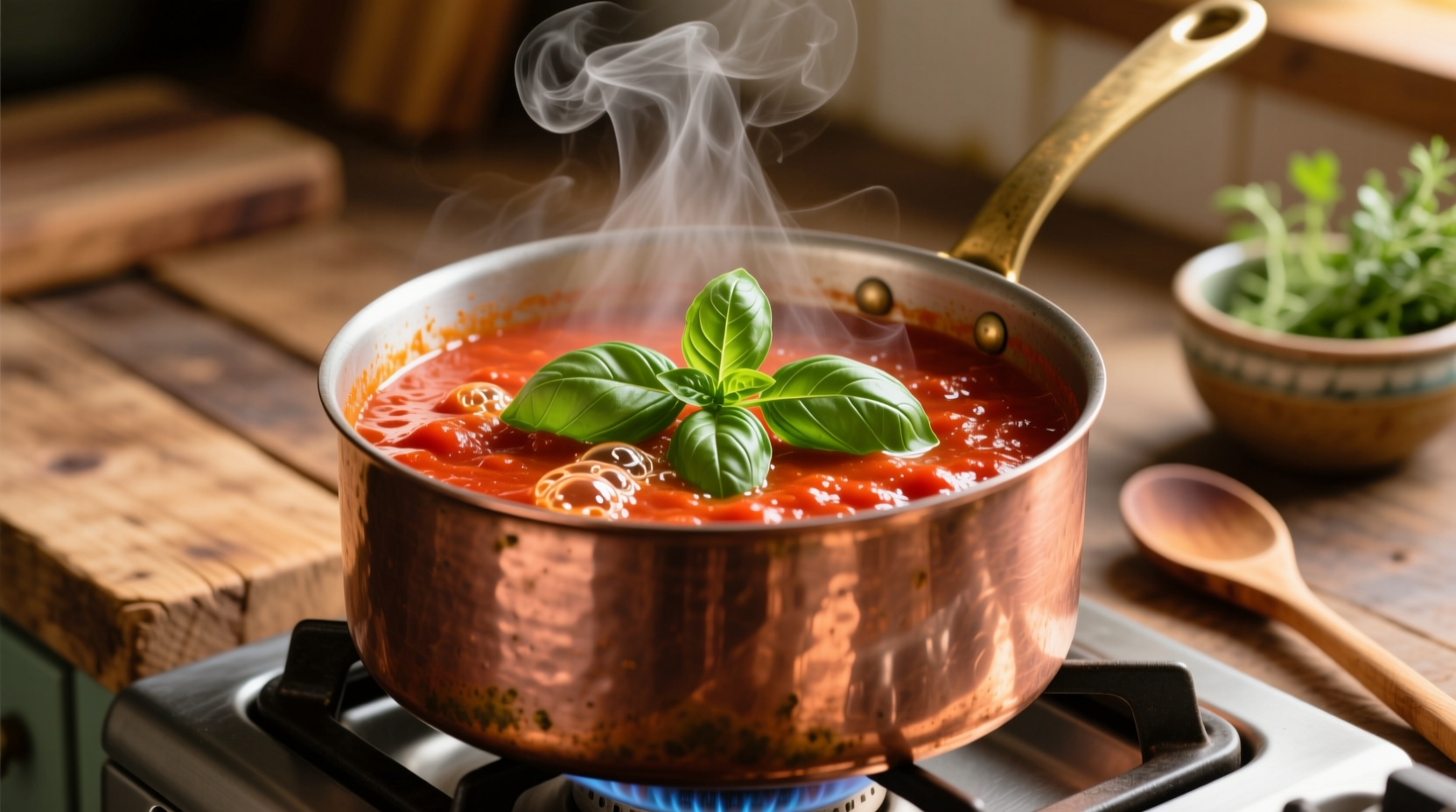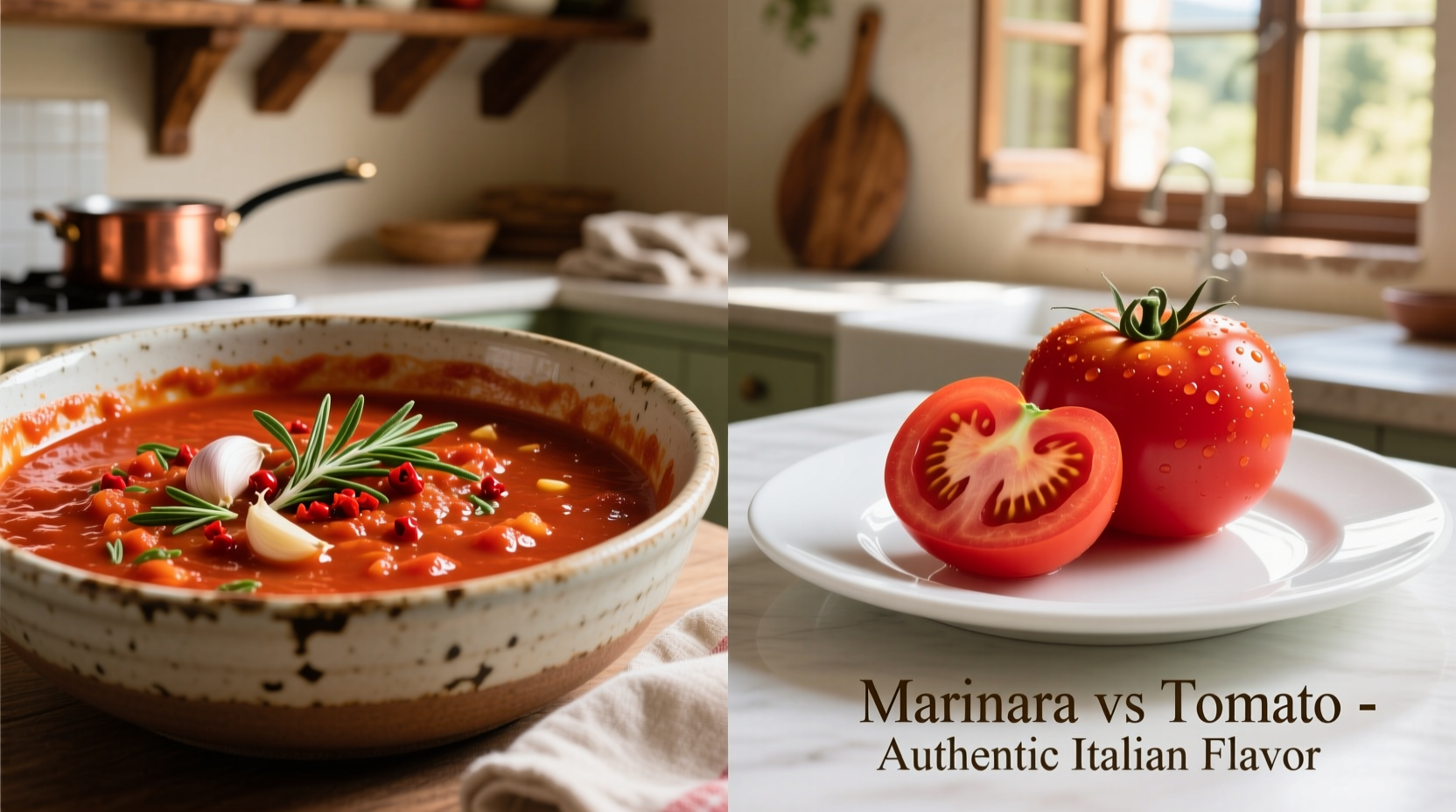When you're standing in the grocery aisle staring at canned tomatoes and marinara sauce, wondering which one to grab for your spaghetti night, you're not alone. Many home cooks confuse these two pantry staples, leading to dishes that miss the mark of authentic Italian flavor. Let's clarify exactly what sets them apart and how to use each properly.
Breaking Down the Core Differences
The fundamental distinction lies in preparation and ingredients. Marinara is a specific Italian sauce with a defined recipe, while tomatoes refer to the raw fruit or minimally processed tomato products.
| Feature | Marinara Sauce | Plain Tomatoes |
|---|---|---|
| Base Ingredients | Tomatoes, garlic, olive oil, herbs (typically oregano and basil), salt | Tomatoes only (sometimes with citric acid or calcium chloride) |
| Preparation Time | 20-45 minutes (traditional recipe) | N/A (ready to use) |
| Texture | Smooth, slightly thickened from reduction | Varies (whole, crushed, diced, pureed) |
| Flavor Profile | Complex: savory, herbal, with garlic notes | Simpler: primarily tomato flavor, can be acidic |
| Traditional Use | As finished sauce for pasta, pizza, dipping | Ingredient for cooking, not finished product |
Historical Context: How Marinara Evolved
Marinara sauce originated in Naples, Italy, in the late 18th century after tomatoes were introduced from the Americas. The name "marinara" (meaning "seafaring" or "of the sea") likely comes from its use by sailors who needed a sauce that could be prepared quickly with shelf-stable ingredients during voyages. According to Accademia Italiana della Cucina, authentic marinara contains only four ingredients: tomatoes, garlic, oregano, and extra virgin olive oil—no onions or wine, which distinguish it from other tomato sauces like pomodoro.

When to Use Each: Practical Kitchen Guidance
Understanding the appropriate context for each product prevents common cooking mistakes:
Reach for Marinara Sauce When:
- You need a ready-to-use pasta sauce (just heat and serve)
- Preparing quick weeknight meals with limited cooking time
- Creating appetizers like garlic bread dipping sauce
- You want consistent flavor without cooking expertise
Choose Plain Tomatoes When:
- You're making sauce from scratch and controlling flavor development
- Creating dishes where tomato flavor should dominate (like tomato soup)
- Following authentic Italian recipes that specify "tomatoes" as ingredient
- You want to customize seasoning to your preference
Substitution Reality Check
Can you substitute one for the other? The answer depends on your culinary goals:
Using plain tomatoes instead of marinara: You'll need to sauté garlic in olive oil first, then add tomatoes and herbs, simmering for 20-30 minutes to develop flavors. This approach gives you more control but requires additional cooking time and skill.
Using marinara instead of plain tomatoes: This often creates overly seasoned dishes. If substituting, look for "no salt added" marinara and dilute with water or additional plain tomatoes to balance flavors. Professional chefs at Italian Food Central recommend reducing other seasonings by 50% when making this substitution.
Avoiding Common Mistakes
Many home cooks make these critical errors:
- Using marinara as pizza sauce: Traditional Neapolitan pizza uses only crushed tomatoes, not pre-seasoned marinara, which makes pizza overly salty and herbal.
- Adding ingredients to store-bought marinara: Quality marinara is a finished product. Adding more garlic or herbs often creates unbalanced flavors.
- Confusing marinara with spaghetti sauce: Marinara is simpler and quicker to prepare than American-style spaghetti sauce, which typically includes meat and longer cooking times.
Professional Chef Insights
When developing recipes, professional chefs consider the "flavor journey" of each ingredient. As noted by culinary experts at the International Culinary Center, marinara's pre-developed flavor profile works best as a finished sauce, while plain tomatoes serve as a blank canvas for building complex sauces from scratch. The acidity levels differ significantly—marinara typically has balanced acidity from proper cooking techniques, while canned tomatoes can be more acidic and require careful seasoning to mellow.
Practical Application Guide
Here's how to maximize each product in your kitchen:
| Dish Type | Best Choice | Pro Tip |
|---|---|---|
| Weeknight spaghetti | Marinara | Stir in reserved pasta water to help sauce adhere |
| Homemade pizza | Crushed tomatoes | Add pinch of sugar to counter acidity |
| Shrimp scampi | Marinara | Add lemon zest to brighten flavors |
| Tomato soup | Whole peeled tomatoes | Roast tomatoes first for deeper flavor |
Quality Considerations
Not all products are created equal. When selecting marinara sauce, check the ingredient list—authentic versions contain only tomatoes, garlic, olive oil, herbs, and salt. Many commercial brands add sugar, preservatives, or thickeners that alter the traditional flavor profile. For plain tomatoes, San Marzano DOP-certified varieties offer superior sweetness and lower acidity, making them preferred by Italian chefs for sauce-making.
Final Verdict
Marinara sauce and plain tomatoes serve different culinary purposes. Marinara is a complete, seasoned sauce ready to use, while tomatoes are an ingredient requiring additional preparation to become a finished sauce. Understanding this distinction elevates your cooking from acceptable to authentically delicious. The next time you're meal planning, choose based on whether you need a finished product or a building block for your culinary creation.











 浙公网安备
33010002000092号
浙公网安备
33010002000092号 浙B2-20120091-4
浙B2-20120091-4